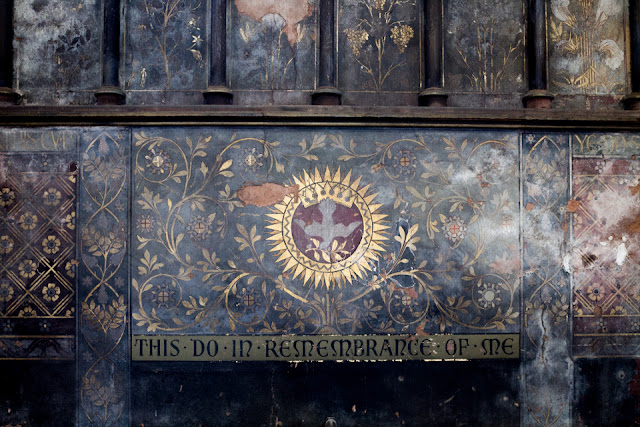William Bryans was known in later life for his copperplate handwriting, his engaging public speaking, the encouraging words he would offer at just the right moment, and his ability to transform a shabby house with a few coats of paint.
When he came to Belfast from Clones as a young teenager around 1880, though, he was probably mainly known for his County Monaghan accent and his wide-eyed country innocence in the sooty energy of the big city.
His family had attended the little Wesleyan Methodist chapel back in Clones, and one of the first things they did in Belfast was to walk the few streets from their rented house on the lower Crumlin Road to visit Carlisle Memorial Methodist Church.
Carlisle Memorial was a brand new Gothic-style building of bright red Dundonald sandstone. Inside, the vast aisles were lit by elegant stained glass windows. Constellations of gold stars twinkled from the blue ceiling. High up amongst the stone arches, dozens of tiny carved faces kept William, his big sister Isabella and his little brother Alex amused during the long services.
Best of all, the front wall of the church, behind the communion table, was a lovingly decorated riot of flowers, fruit, birds and gold lettering. "This do in remembrance of me." William was fascinated by the delicacy of the work. He was already helping his father with his painting business and could brush an even finish on a parlour wall, but these fine strokes were something new.
The preaching at this church was something new too, and William listened. The hours spent in these pews became the foundation for his own work as a Methodist minister in twenty-three congregations across Ireland, from Donegal to Dundrum. He never served in a church whose physical beauty rivalled that of this one, but to every simple chapel he brought an eloquence and integrity inspired by his North Belfast days. His skill with a paintbrush never left him either, and many sanctuaries and manses looked fresher and more inspiring after his tenure there.
William was my great-grandfather. Yesterday I visited his church for the first time. I was moved and excited to think that he too had looked at these arches and stone carvings and painted finishes, over a hundred years ago.
Carlisle Memorial is famous for having become almost totally derelict in the face of demographic changes in North Belfast. Belfast Buildings Trust is working to save the building and restore it for the use of the community. This weekend's European Heritage Open Days allowed us to see the progress of the work so far.
As a total romantic and a lover of decaying things, I'd be thrilled to see the church preserved in its current dusty and stripped back state. With the addition of a good floor, the beautiful empty space would be the perfect venue for music, art and formal events like weddings and receptions.
In fact, BBT is envisaging all sorts of creative ways of enabling this lovely building to be a catalyst for employment and opportunity for local people. This is a cause well worth supporting, and it's one that nineteenth century Methodist churchmen would have approved of. I'll become a Friend of the Trust and follow this and their other great projects. Click here for further information on the Trust and its work.
If you'd like to read more about Carlisle Memorial Church, this RIBA pamphlet is really interesting and informative.



















Beautiful photos and a lovely read.
ReplyDeleteThank you so much, littlequeenie!
Delete